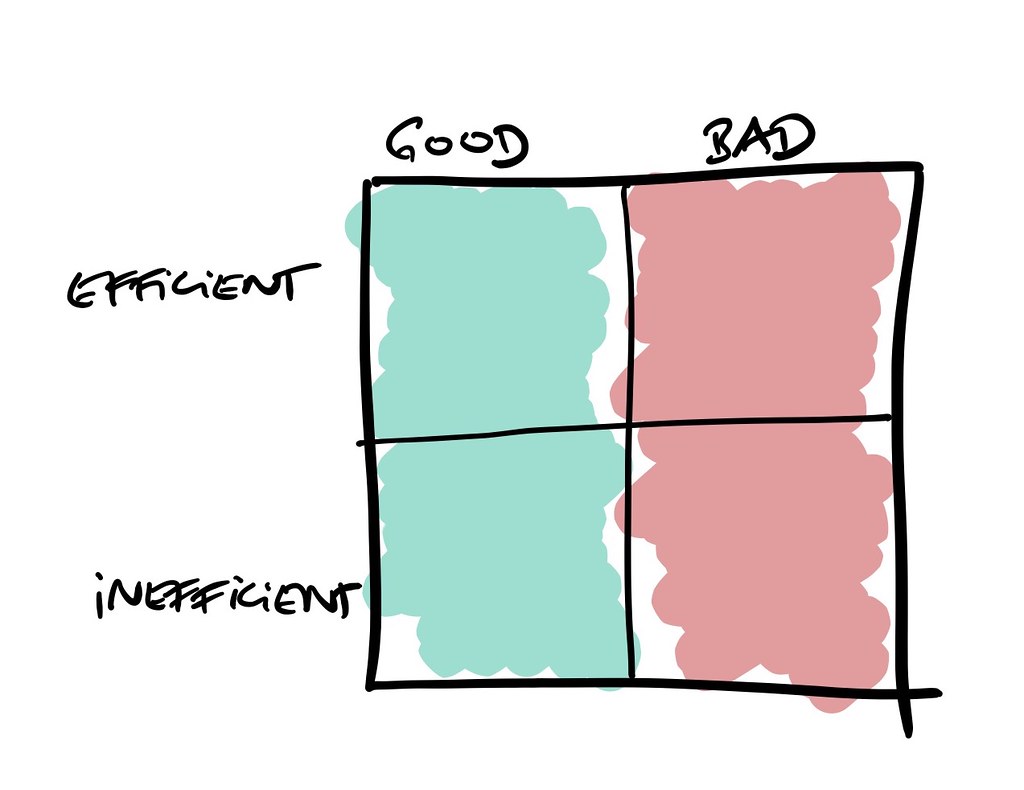I’m reading Kim Stanley Robinson’s Ministry for the Future, which is all about climate change. In it, the author riffs a bit on the role of efficiencies and — maybe more notable — of inefficiencies.
Here’s the opening line of that section:
“there is good efficiency and bad efficiency, good inefficiency and bad inefficiency”
So, somewhat like this:

He goes on to list some examples which I’d like to paraphrase:
- GOOD EFFICIENCY: preventative healthcare
- BAD EFFICIENCY: Any harm to people as a result of increasing profit
- BAD INEFFICIENCY: Using an over-sized vehicle to get around
- GOOD INEFFICIENCY: oxbows in a river defining large flood plains
It’s no coincidence that you’ll find tons of examples of good inefficiencies in biology! Nature is all about inefficiency and redundancy. All the spare DNA, huge numbers of seeds, all that stuff: inefficient! But effective, and resilient, and robust.
I’m wondering how we can usefully apply this to policy; trustworthy tech; societal planning/decision-making.
I think we’ve learned the hard way that the traditional neo-liberal approach of growth & efficiency is a double punch that created many of the problems we see today. Certainly that dual approach has been applied much more broadly than it should have been.
So what are alternative approaches? How can we focus instead on resilience, robustness, good inefficiencies?
